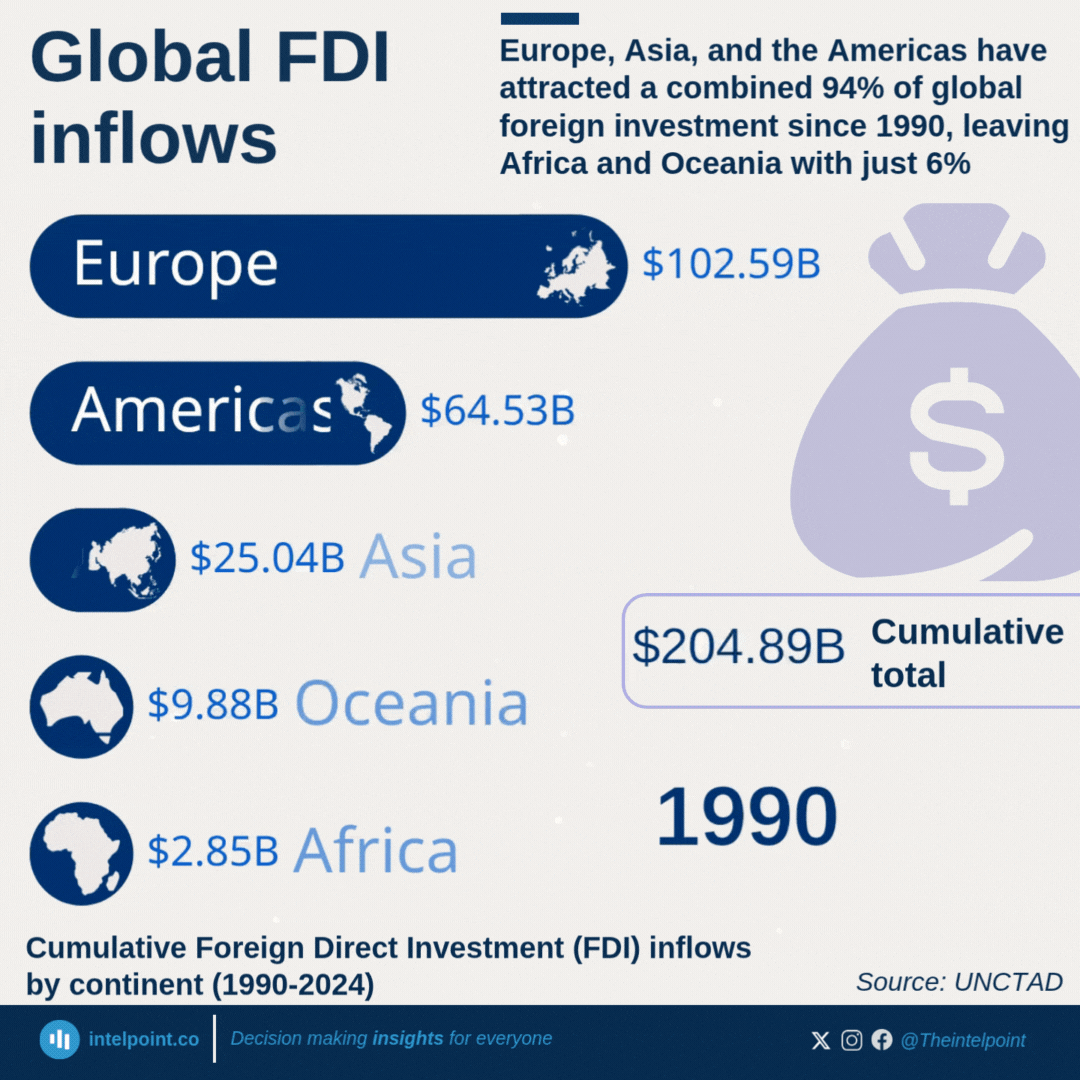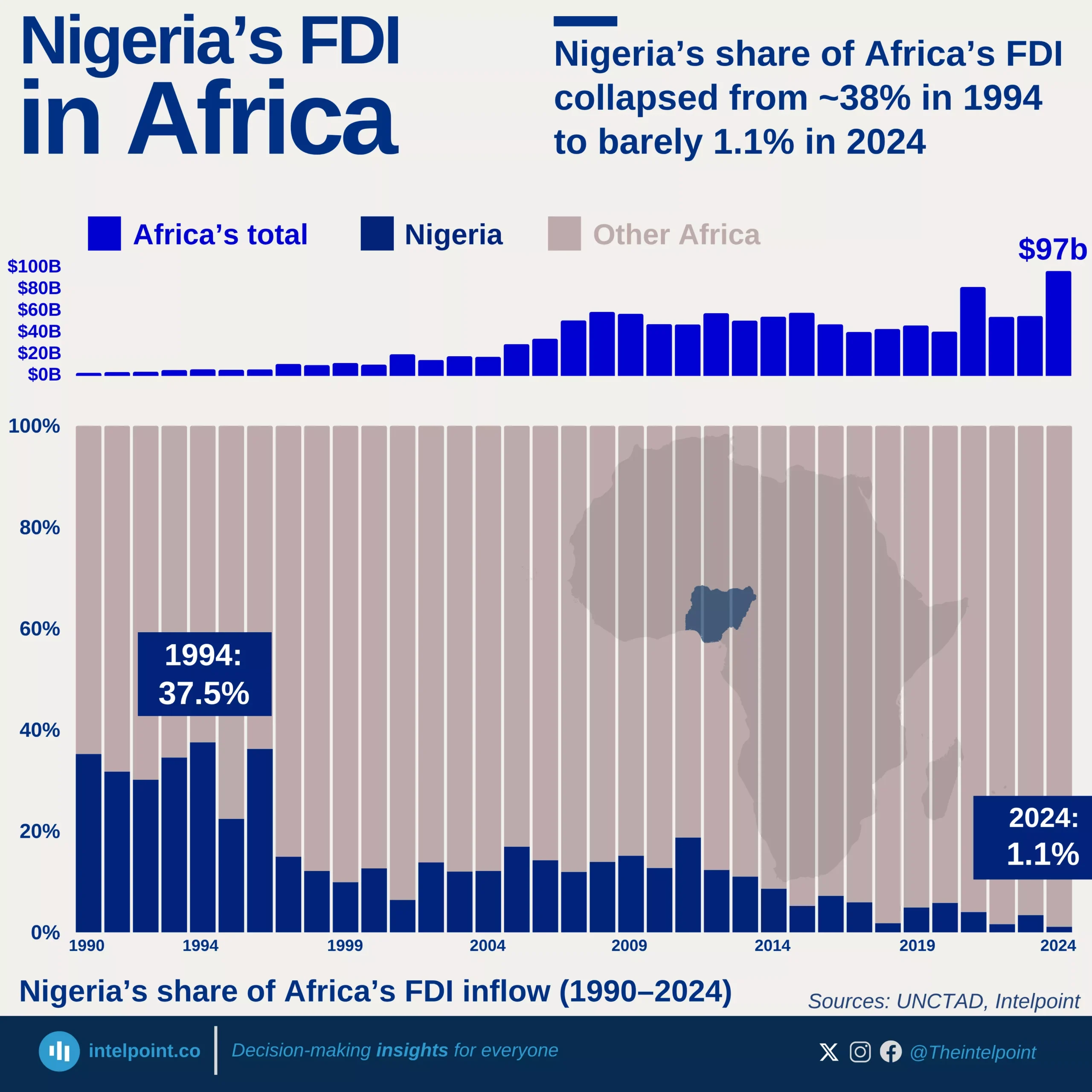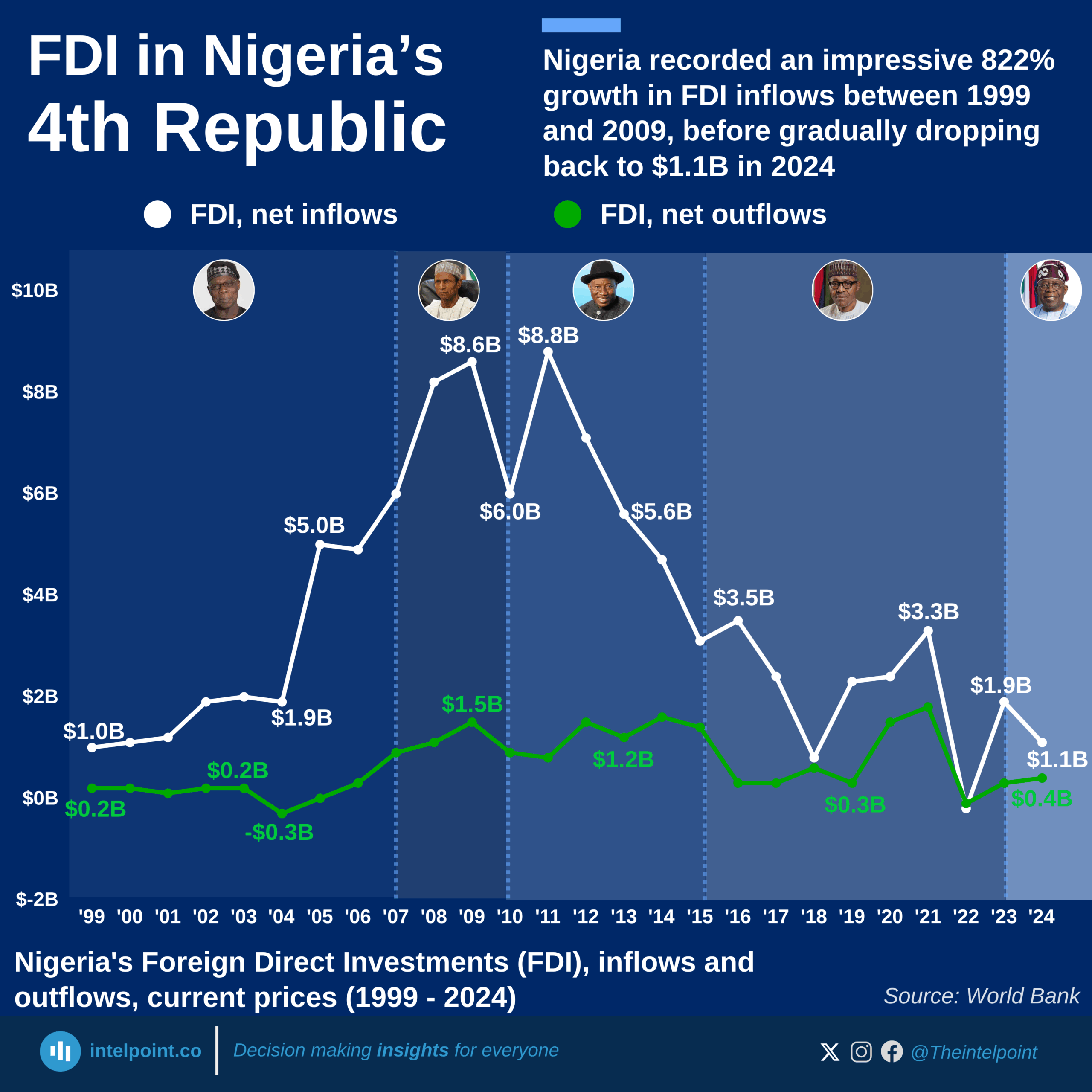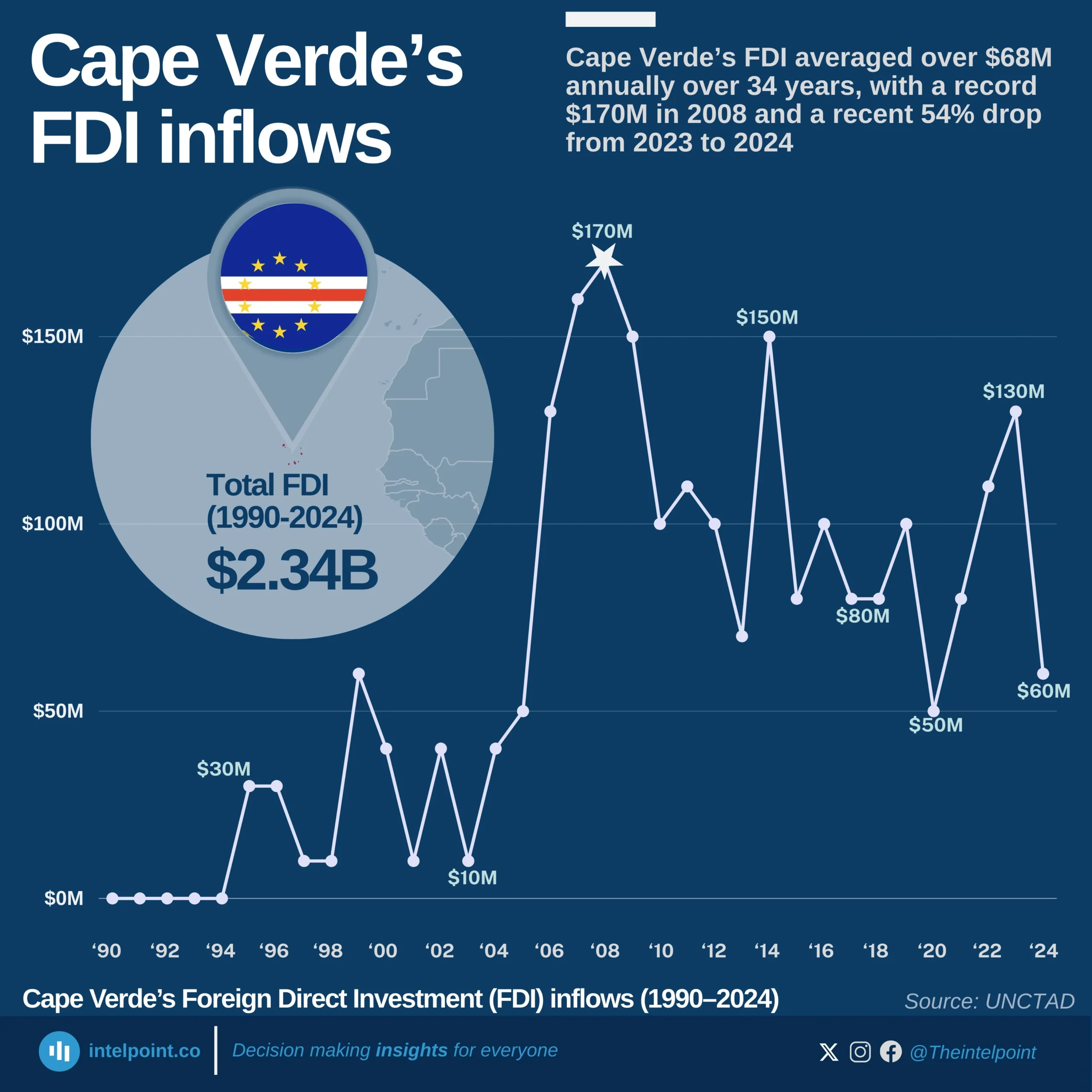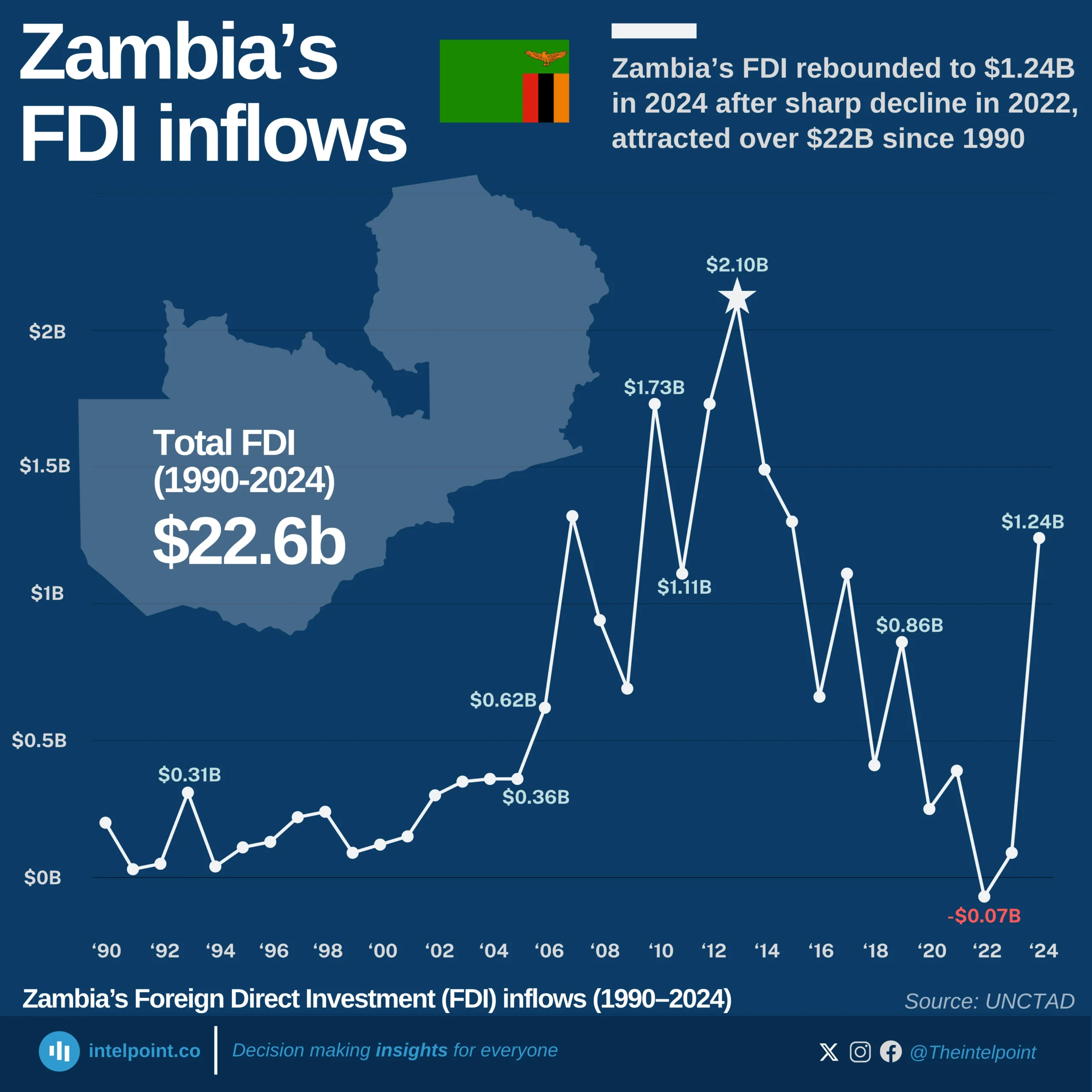Over the last three decades, DR Congo's FDI landscape has evolved significantly. The 1990s were marked by stagnation, with FDI inflows hovering near zero and occasionally turning negative, an indicator of political and economic instability. However, starting in the early 2000s, inflows began a consistent upward climb, hitting $1.81B by 2007 and peaking at $3.31B in 2012.
Since then, DR Congo has maintained relatively stable FDI, with inflows averaging above $1.2B yearly from 2015 onward. The latest figure in 2024, $3.11B, signals a renewed investor appetite and positions DR Congo among the key African economies drawing sustained foreign capital.
